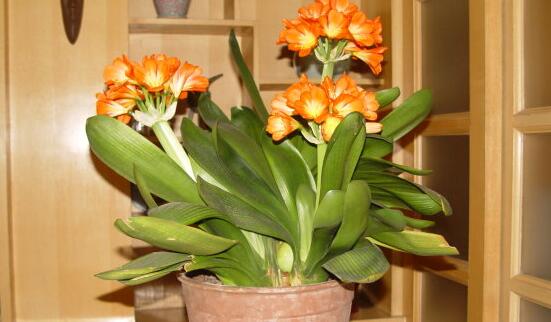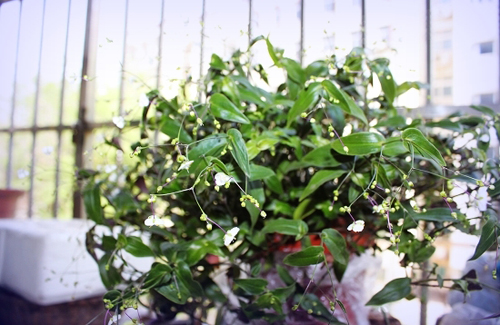What are the ways to raise tulips?
Tulips are colorful and colorful, and the charming flowers also contain a confusing aroma, which makes people deeply fascinated by them. So how do you keep tulips? Now let's take a look at the cultivation of tulips.

Brief introduction of tulips:
Tulip, scientific name: Tulipa gesneriana, is a herb of the genus Tulip in Liliaceae. Although tulips are called the national flower of the Netherlands, the origin of tulips is in the high mountains of Xizang, Iran and Turkey. Tulips are sunny, sheltered and humid, and the Mediterranean climate is just right for tulips to grow, so tulips are now widely planted in countries around the Mediterranean.
Tulips usually bloom in March or April every spring and bloom from April to May. When blooming, tulips are rich in colors, such as white, pink, magenta, purple, brown, yellow, orange and so on. There are many types of tulip flowers, such as cup, bowl, egg, ball, bell, funnel and lily and so on. One of the tulips with red dots on their petals is called "the blood of the king". A new variety of tulips was discovered by the Dutch in 1999 and named Cathay Pacific by Chinese first Lady Peng Liyuan in 2014. # p# subtitle # e #
How to raise tulips:
The common cultivation methods of tulips are to divide balls and sow and reproduce. When raising tulips, you need to prepare tulip bulbs first. The balls must be fresh and healthy and there must be no signs of damage or decay, otherwise even if the tulips survive, they will eventually rot and die before they bloom.
Next we need to prepare the flowerpots and soil for tulips. Tulip is fond of moisture and fertilizer, and it is best to cultivate it in slightly acidic sandy loam with rich humus, loose and fertile soil and good drainage. Tulip flowerpots are no different from ordinary flowerpots, as long as there are holes in the bottom, which is to give tulips air and water. In addition, although tulips like water, the soil should not be too wet. If the soil is too wet, you can put it in the sun.
Then you can prepare to plant. Note that tulips are usually planted around November every year. When planting, first put some brown skin on the bulb and then plant it into the soil. Note that some people move and bury the tulip ball as deep as possible, but this is not the case. instead, it makes the ball unable to breathe and is stuck in the soil. When planting, you can expose part of the ball outside, but if you plant in this way, you should pay attention to watering it gently and don't let the water wash the ball out of the soil.
After planting tulips, you can't see the light until the tulips take root smoothly, which may take more than half a month. At that time, you can gently shake the seed ball, if it doesn't move. At this time, you can move the tulips to the sun. Due to sunlight, soil moisture evaporates, so remember to water, but not too much. The tulips will sprout slowly, and they will blossom in March or April next year.
Tulips are relatively precious flowers, so when breeding, we should pay attention to observe the growth of flowers at any time, once there are problems should be solved in time.
How to raise potted tulips? what are the breeding methods?
Tulip is no stranger to us. It is the national flower of Turkey, Kazakhstan and the Netherlands. Its colorful and unique appearance is very attractive. A pot of tulips placed at home will make people feel pleasing to the eye. So, how to raise potted tulips? What are the cultivation methods?
The cultivation methods of potted tulips can be seen from the following six aspects:
1. Soil: tulips require both water retention and air permeability, the salinity should not be too high, and the pH value should not be less than 6. The mixture of peat, mature soil and sand with 1 ∶ 1 ∶ 1 as cultivation medium has a better effect.
2. Sunlight: sufficient sunlight is necessary for the growth of tulips. Insufficient sunlight will cause poor plant growth, cause sprouting, plant weakening, lighter leaf color and shorter flowering period. But tulips on the pot after more than half a month, should be properly shaded, in order to facilitate the growth of new roots. In addition, during germination, the elongation of flower buds is inhibited by light. Shading can promote the elongation of flower buds and prevent the early vegetative growth from growing too fast. After emergence, light should be increased to promote plant jointing, form buds and promote coloring. After the buds are fully colored in the later stage, direct sunlight should be prevented and the flowering time should be prolonged.
3. Temperature: tulips prefer warm winters and cool summers, and the optimum temperature for growth is 9-13 ℃. Strong cold resistance, can withstand the low temperature of-35 ℃ in winter.
4. Watering: water should be watered thoroughly after planting, so that the soil and seed bulbs can be fully and closely combined to facilitate rooting, water should be properly controlled after budding, leaves can be gradually elongated, water can be sprayed on the leaf surface to increase air humidity, and adequate water supply should be ensured at bolting and budding stages to promote the full development of flowers and proper water control after flowering.
5, fertilization: tulips do not have high requirements for fertilizer, if the growth potential is weak, you can apply some nitrogen fertilizer. When the root system is well developed, 2 kg of calcium nitrate is applied every 100 square meters, spread in three times, each time at an interval of more than one week.
6. Insect pests: the pathogens of tulip diseases and insect pests can be carried by the seed ball or by the soil, which mostly occur in the environment of high temperature and high humidity. the main diseases are stem rot, soft rot, broken color disease, quenching disease, blind bud and so on. most of the pests are aphids. Adequate soil disinfection should be carried out before planting, virus-free bulbs should be selected as far as possible, diseased plants should be dug up and destroyed in time, and fungicides should be poured once or twice in the growth process of the greenhouse, the effect is better; good ventilation should be maintained to prevent high temperature and humidity; when aphids occur, 3% natural pyrethrum can be sprayed 800 times.
Flowers are alive, planting a pot of tulips at home seems to add a lot of life to the family, and the color of tulips will also make our vision more colorful, so potted tulips are your best choice.
Introduction to the culture method of how to raise tulips
Li Bai's famous sentence "Lanling Wine Tulip" makes us feel the beauty and fame of tulips. Tulips are the national flower of many European countries. The tulips have beautiful flowers and have a very long flowering period. Next, we will introduce to you how to raise tulips and take a look at the methods of tulip cultivation.
Introduction to the culture method of how to raise tulips
First, how to raise tulips-the soil requirement of tulips is to ensure both water permeability and air permeability, the alkalinity and acidity of tulip soil can not be too high, and neutral soil is the best.
Second, how to raise tulips-after tulips sprout, whether they can grow healthy flower buds depends on the sunlight. Sufficient light can make plants grow healthier. Of course, at the same time, we should also control not to let the sun shine directly on the tulips, causing adverse growth effects.
Third, how to raise tulips-temperature tulips like a warm winter environment, but they like a cool and ventilated climate in a hot summer environment. The normal constant temperature of tulips is best controlled at about 13 to 9 degrees. The cold tolerance of tulips is better, and the cold tolerance in winter is stronger.
Fourth, how to raise tulips-before watering tulips, they need to be watered thoroughly, and the close combination of soil and roots is more conducive to rooting and sprouting in the later stage. Wait until after budding to properly control watering, and you can spray some water on the page to increase moisture to achieve sufficient water supply.
- Prev

After the orchid blossoms, how to raise it so correctly?
Magnolia came to China from the tropical areas of southern Africa and is deeply loved by our people. because of its special growing environment, let's learn how to grow it after flowering with the editor. The characteristic of Cymbidium: there is a special feature of Cymbidium, that is, its roots and leaves are related to each other.
- Next

The culture method of wedding dress hanging orchid avoid the scorching sun and can't bear the shade.
Wedding dress hanging orchid originated in South Korea leaflet bright green, leaf back purplish red, stem knotted, slender soft; floret white tall and straight. Therefore, it is often used as a wedding flower, so let's talk about the breeding methods of wedding orchids. Wedding dress hanging orchid growth habits: like high temperature and humidity, scattered light environment
Related
- Fuxing push coffee new agricultural production and marketing class: lack of small-scale processing plants
- Jujube rice field leisure farm deep ploughing Yilan for five years to create a space for organic food and play
- Nongyu Farm-A trial of organic papaya for brave women with advanced technology
- Four points for attention in the prevention and control of diseases and insect pests of edible fungi
- How to add nutrient solution to Edible Fungi
- Is there any good way to control edible fungus mites?
- Open Inoculation Technology of Edible Fungi
- Is there any clever way to use fertilizer for edible fungus in winter?
- What agents are used to kill the pathogens of edible fungi in the mushroom shed?
- Rapid drying of Edible Fungi

